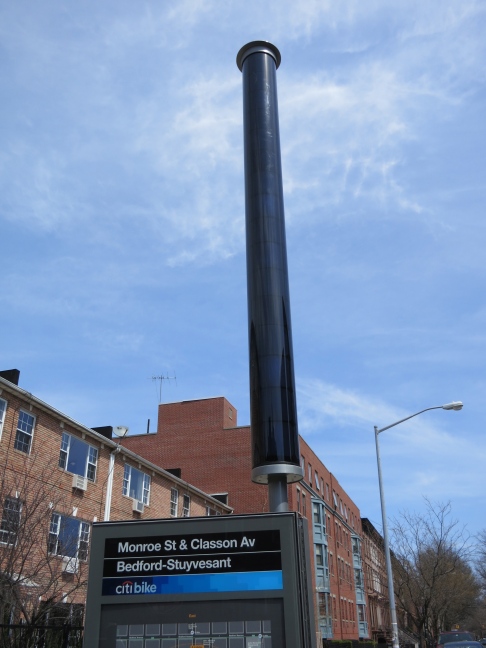
It’s true: Citi Bike Share stations have begun popping up around Manhattan, weeks before the promised release date next month. Social media users were quick to spot the stations, uploading photos in excitement, anticipation, or confusion. Kiosks with tall solar poles allowing the docks to operate off the grid serve as beacons on the streetscape. So far, no bikes have appeared at the corrals.
In conjunction with these first stations going up, Citi Bike has updated its website complete with an interactive map of the first phase of bike locations, riding tips, as well as a pricing guide. The program, run by international bike share designers Alta Bicycle Share, began accepting memberships on Monday, and surpassed their week-long goal of 5,000 members by 3:30pm on Tuesday. This figure already reflects a higher membership than in cities who have had a bike share for several years.

The company is also gearing up to release an app that will act as a station finder and a route planner, selecting the safest biking routes between stations and searchable destinations–like the nearest coffee shop. Additionally, the app will provide live updates on bike availability and park spaces at stations, an issue that many have begun to question as the popularity of the system becomes evident.
A Department of Transportation study revealed 80 percent of cycling trips end in Manhattan, with the majority starting across the East River in the neighborhoods surrounding Park Slope. The big question that remains is what to do if popular stations are reaching parking capacity and there is nowhere to put the bike once someone arrives. A look at the map reveals most stations offer between 30 and 40 docks, and are usually less than a three block ride from another station. The stations to be installed for phase one will be noticeably dense. A three-by-three-block area is likely to contain more than 100 docks, with some stations having as many as 59.
For riders worried about going over their uncharged time limit, a 15-minute extension can be obtained if the station is full, which should be plenty of time to get to one of the nearby stations. The system is catered towards commuters and short trips, not toward an afternoon picnic ride to the waterfront.
It is likely New York will see the same overnight rearranging as the successful Capital Bike Share in Washington D.C., also operated by Alta, where workers shift bikes around overnight on flatbed trucks to reset the equilibrium and adjust the system to what works best.
Interested cyclists can receive a free 24-hour pass by attending a one-hour safety course scheduled through the end of June at several bike shops around the city.
Photos: Citi Bike Share, Brooklyn Spoke